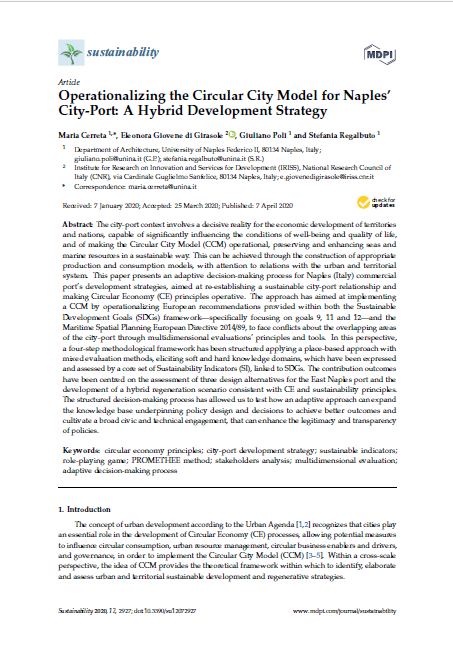Abstract
The city-port context involves a decisive reality for the economic development of territories and nations, capable of significantly influencing the conditions of well-being and quality of life, and of making the Circular City Model (CCM) operational, preserving and enhancing seas and marine resources in a sustainable way. This can be achieved through the construction of appropriate production and consumption models, with attention to relations with the urban and territorial system. This paper presents an adaptive decision-making process for Naples (Italy) commercial port’s development strategies, aimed at re-establishing a sustainable city-port relationship and making Circular Economy (CE) principles operative. The approach has aimed at implementing a CCM by operationalizing European recommendations provided within both the Sustainable Development Goals (SDGs) framework—specifically focusing on goals 9, 11 and 12—and the Maritime Spatial Planning European Directive 2014/89, to face conflicts about the overlapping areas of the city-port through multidimensional evaluations’ principles and tools. In this perspective, a four-step methodological framework has been structured applying a place-based approach with mixed evaluation methods, eliciting soft and hard knowledge domains, which have been expressed and assessed by a core set of Sustainability Indicators (SI), linked to SDGs. The contribution outcomes have been centred on the assessment of three design alternatives for the East Naples port and the development of a hybrid regeneration scenario consistent with CE and sustainability principles. The structured decision-making process has allowed us to test how an adaptive approach can expand the knowledge base underpinning policy design and decisions to achieve better outcomes and cultivate a broad civic and technical engagement, that can enhance the legitimacy and transparency of policies.
